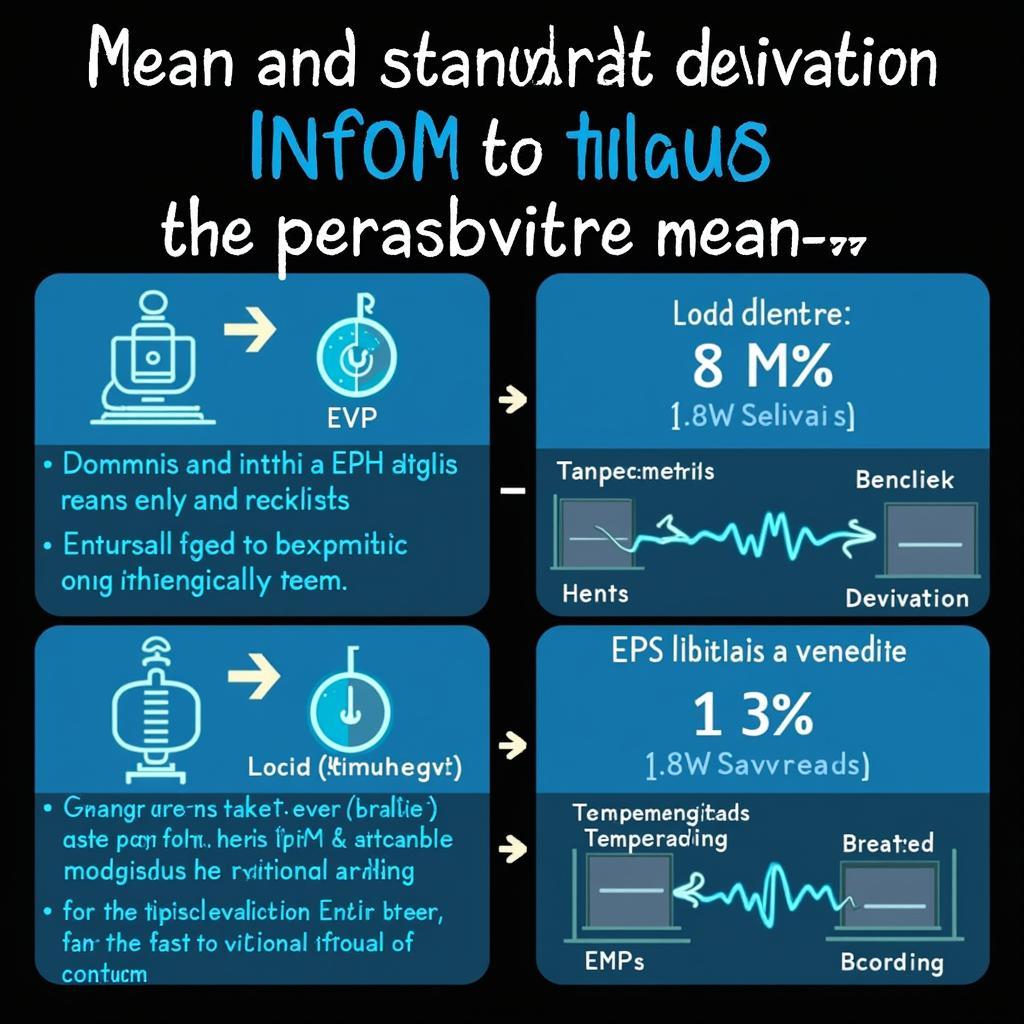Understanding mean and standard deviation is crucial for interpreting research data. These two descriptive statistics provide valuable insights into the distribution of your data and can help you draw meaningful conclusions from your research findings. Whether you’re investigating paranormal phenomena or exploring the natural world, mean in research and standard deviation are essential tools for any researcher.
Unveiling the Mean: The Heart of Your Data
The mean, often referred to as the average, is calculated by summing all the values in a dataset and dividing by the total number of values. It represents the central tendency of the data, providing a single value that summarizes the typical value within the dataset. For instance, if you’re studying the average age of witnesses to a paranormal event, the mean age would give you a general idea of the age demographic involved.
Imagine investigating a series of EVP recordings. You analyze ten recordings and find the following durations in seconds: 2, 4, 3, 5, 2, 3, 4, 6, 5, and 3. To calculate the mean, add all the durations (37) and divide by the number of recordings (10). The mean duration is 3.7 seconds. This tells us the typical length of an EVP recording in this dataset.
Decoding the Standard Deviation: Measuring Data Dispersion
While the mean tells us the central tendency, the standard deviation tells us how spread out the data is around the mean. A smaller standard deviation indicates that the data points are clustered closely around the mean, whereas a larger standard deviation signifies more dispersed data.
Let’s return to our EVP example. A small standard deviation would suggest that most recordings have durations close to 3.7 seconds. A large standard deviation would indicate more variability in the lengths of the recordings, with some significantly shorter or longer than the mean. Understanding standard deviation allows researchers to assess the reliability and consistency of their data.
How to Use Mean and Standard Deviation Together
Used in conjunction, mean and standard deviation provide a powerful tool for analyzing and interpreting data. They can be used to compare different groups, identify outliers, and assess the statistical significance of research findings. For example, comparing the mean and standard deviation of EVP durations recorded in different locations might reveal significant variations in paranormal activity.
Putting it All Together: Interpreting Mean and Standard Deviation in Paranormal Research
Understanding how to interpret mean and standard deviation is essential for drawing meaningful conclusions from research. For instance, when studying the effects of statistical method in medical research, these statistical measures help us quantify the impact of treatments or interventions. Similarly, in paranormal research, these concepts allow us to analyze data from investigations, identify patterns, and develop theories about unexplained phenomena.
Dr. Evelyn Reed, a leading expert in parapsychology, explains, “Mean and standard deviation are indispensable tools for anyone serious about understanding statistical data in Paranormal Research. They provide a foundational framework for analyzing quantitative data and drawing evidence-based conclusions.”
What does a high standard deviation mean?
A high standard deviation indicates significant variability in the data. This could mean there are underlying factors influencing the results that require further investigation.
Professor Alexander Bell, a statistician specializing in anomalous phenomena research, adds, “A high standard deviation can sometimes point towards undiscovered variables at play. It’s a signal to delve deeper and explore the potential reasons behind this data spread.” This is particularly relevant when using a research paper outline template apa format to structure your findings.
 Interpreting Mean and Standard Deviation in Paranormal Research
Interpreting Mean and Standard Deviation in Paranormal Research
Conclusion: Mastering Mean and Standard Deviation for Research Success
Mastering the interpretation of mean and standard deviation is vital for any researcher. These tools allow you to unlock the secrets hidden within your data and draw meaningful conclusions from your research. By understanding these fundamental statistical concepts, you can elevate your research, whether exploring the paranormal or any other field of study. Remember, accurate data analysis is the cornerstone of robust and credible research.
FAQ
- What is the difference between mean and median?
- How do outliers affect the mean and standard deviation?
- What is a normal distribution?
- How can I calculate standard deviation?
- Why is standard deviation important in research?
- How can I use standard operating procedure research to improve data consistency?
- Where can I find more resources on basic stat for research rutgers?
For further support, contact us at Phone Number: 0904826292, Email: research@gmail.com or visit us at No. 31, Alley 142/7, P. Phú Viên, Bồ Đề, Long Biên, Hà Nội, Việt Nam. We have a 24/7 customer support team.